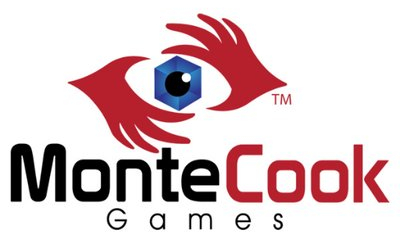Action Types
Most characters can perform two actions per turn, one major and one minor. Major actions take more time and usually involve a skill test. Minor actions are quick and rarely require a test to succeed; you might shout a word or two, or draw your weapon. If you want, you can perform a minor action instead of your major action and thus get two minor actions that round.
Some actions are reactions – usually some kind of maneuver to evade attacks. Reactions may be performed at any time during the round. This means that you can use your action before your turn, or wait until after your turn to be ready for an enemy’s attacks. When using reactions to protect yourself, you must choose to spend your action before you know whether your opponent’s attack roll fails or succeeds.


Action Types

Major Action
A major action is something that does require thought and effort. It takes up a character’s whole action. Making an attack is always a major action, but a major action might also be studying ancient glyphs on a ruin, or convincing a bloodthirsty foe to stand down. Sometimes Powers or other effects will note that something requires “an action” — this is the same as a major action.Pending
Also known as ...
Major (STA, D&D4e, SR 6e)
Standard (Pathfinder 1e)
Action (D&D5e)
Simple (EX3, EXS, Storypath)
Instant ( COD/VTR)
Normal Action (Year-Zero 2AP)
Full Round Actions of Dungeons & Dragons 3.5 and Pathfinder would be a a combination of Major and Minor actions in most modern games.

Minor Action
Also known as ...
Minor (STA, SR6e)
Move (D&D4e, PF1st)
Move (D&D5e)
Fast Action (Year-Zero 1AP)
1 Reflexive Move ( COD/VTR)
1 Reflexive Move (Storypath)
1 Reflexive Move ( EX3/EXS)

Reaction
Most creatures have a Reaction R available to them, especially player characters an important characters. This allows them reactions like dropping prone, taking a full defense or taking cover. A Reaction R is an instant response to a trigger of some kind, which can occur on your turn or on someone else's. When you take a reaction, you can't take another one until the start of your next turn. If the reaction interrupts another creature's turn, that creature can continue its turn right after the reaction. Certain special abilities and spells allow you to take a more advanced reactions like a Vampire Celerity, Werewolf Gifts or Mage Time Magic.A Reaction always requires an associated action with them, so you must have that action available to react.
For example ...
Keep in mind there is nothing stopping you from using Full Defense on your turn and not needing a Reaction. Certain circumstances, conditions or powers that impede movement may remove your ability to have a Reaction, such a entanglement, poison and surprise.
Pending

Reflexive Action
A reflexive action is something that requires no conscious effort. Noticing oncoming danger, or making idle banter during battle, for example. Reflexive actions do not count towards the total number of things a character can do during her turn.
Also known as ...
No, Free, Swift (D&D 3.5, PF1e)
Bonus & Reactions (D&D5e)
Reflexive Action ( COD/VTR)
Reflexive Action (Storypath)
Reflexive Action ( EX3/EXS)
Free Action (Year-Zero 0AP)
Some of the other actions types like Reactions and Bonus Actions are not a perfect fit, just a catch all example at the end. The Storyteller is always advised to govern these with narrative sense and not allow them to devolve. I always encourage the spirit of the story over the letter of the rules.

Mixed Action
Exalted Essence - Flurry
Flurry: Flurries allow a character to take two simple actions. These must be two different actions, so it cannot be two attacks (even if generated from actions such as rush), or two attempts to talk down a foe, but it can be an attack and an attempt at intimidation. When your character makes a flurry, reduce both pools by three dice. A flurry with a rolled and unrolled action penalizes the rolled action. If an effect creates a flurried action, apply the penalty to the created action’s roll. This penalty cannot be reduced or ignored unless an effect specifically states so. A character can only take two simple actions per combat round. This includes simple actions taken in response to things, like counterattacks (see p. 184). Unless they have a specific restriction or generate a simple action (typically via Charm use), reflexive actions do not count toward this limit. All actions have a set difficulty, explained on p. 117.Storypath Ultra - Mixed Actions
Sometimes a player may want to split a character’s attention to take two different actions at the exact same time. Unless otherwise noted, a player may choose to combine two actions into the same roll to perform them at the exact same time, referred to as a mixed action. When doing this follow these steps:If the player does not garner enough hits to spend on both difficulties, she picks which difficulty she wants to overcome and completes only that action. If she fails both actions, no Complications occur.
Also known as ...
Mixed Action (Storypath, Storypath Ultra)
Flurry (Exalted 3e)
Flurry (Exalted Essence)
This thread is locked. You cannot leave a reply here.
Wizards of the Coast's Fan Content Policy
“Creation & Shadow War is unofficial Fan Content permitted under the Fan Content Policy. Not approved/endorsed by Wizards. Portions of the materials used are property of Wizards of the Coast. ©Wizards of the Coast LLC.” For more information please visit wizards.com.”
White Wolf Dark Pact Fan Policy
“Portions of the materials are the copyrights and trademarks of Paradox Interactive AB, and are used with permission. All rights reserved. For more information please visit worldofdarkness.com.” This fan-forge Material is not official World of Darkness material.
Monte Cook Games Fan Use Policy
Numenera and its logo are trademarks of Monte Cook Games, LLC in the U.S.A. and other countries. All Monte Cook Games characters and character names, and the distinctive likenesses thereof, are trademarks of Monte Cook Games, LLC. Content derived from Monte Cook Games publications is © 2013-2019 Monte Cook Games, LLC. For more information please visit Monte Cook Games.”
Graylion 2019 -
2024


